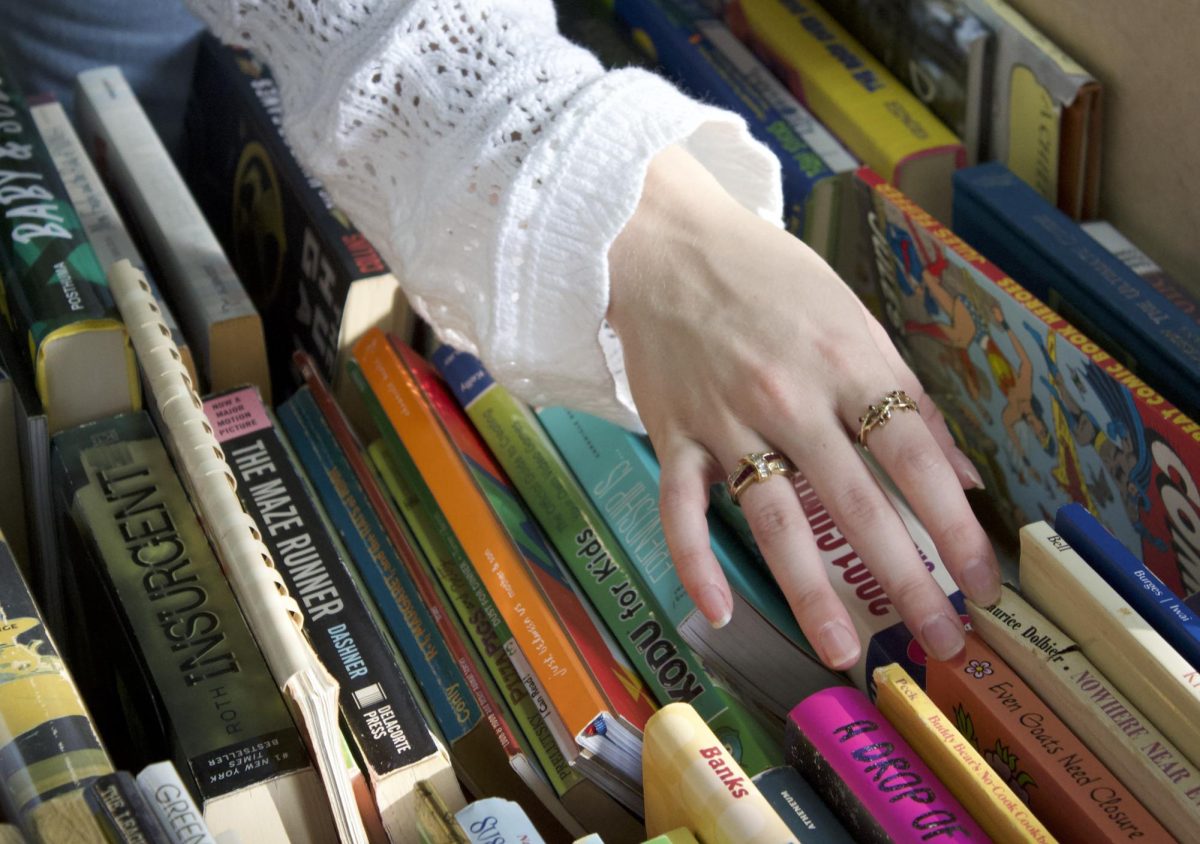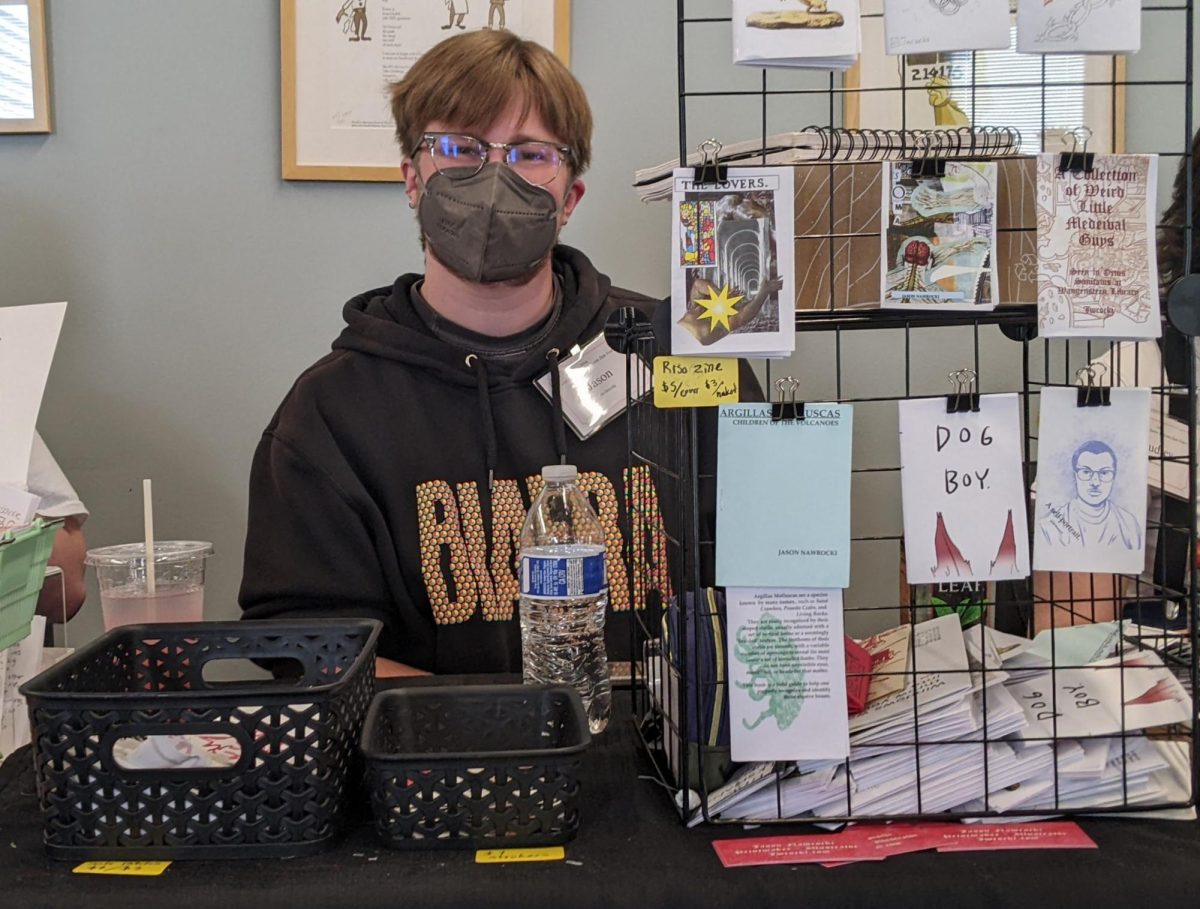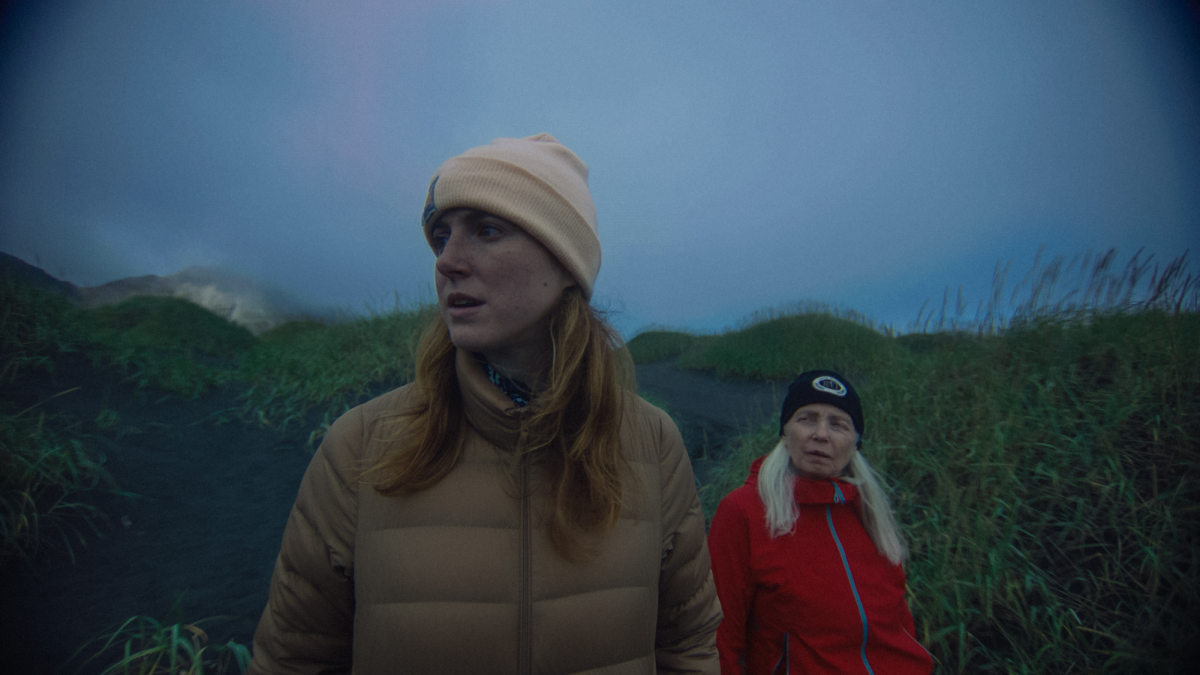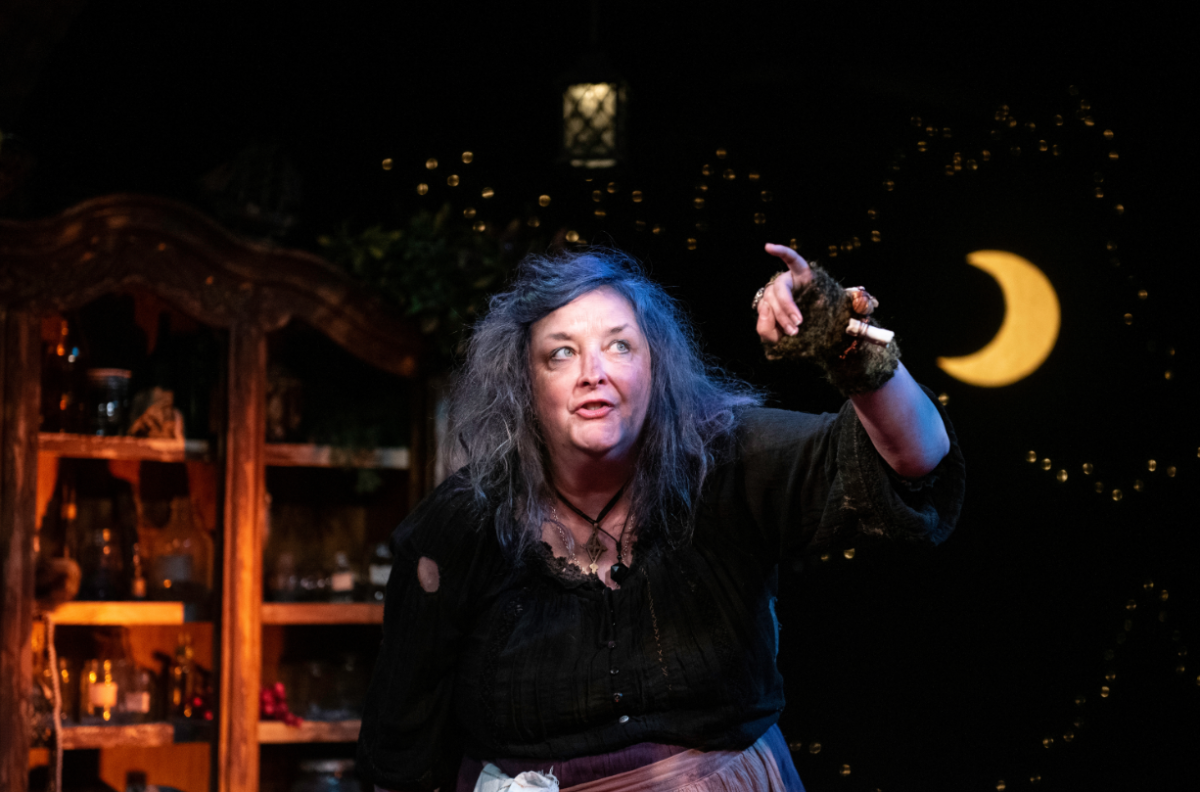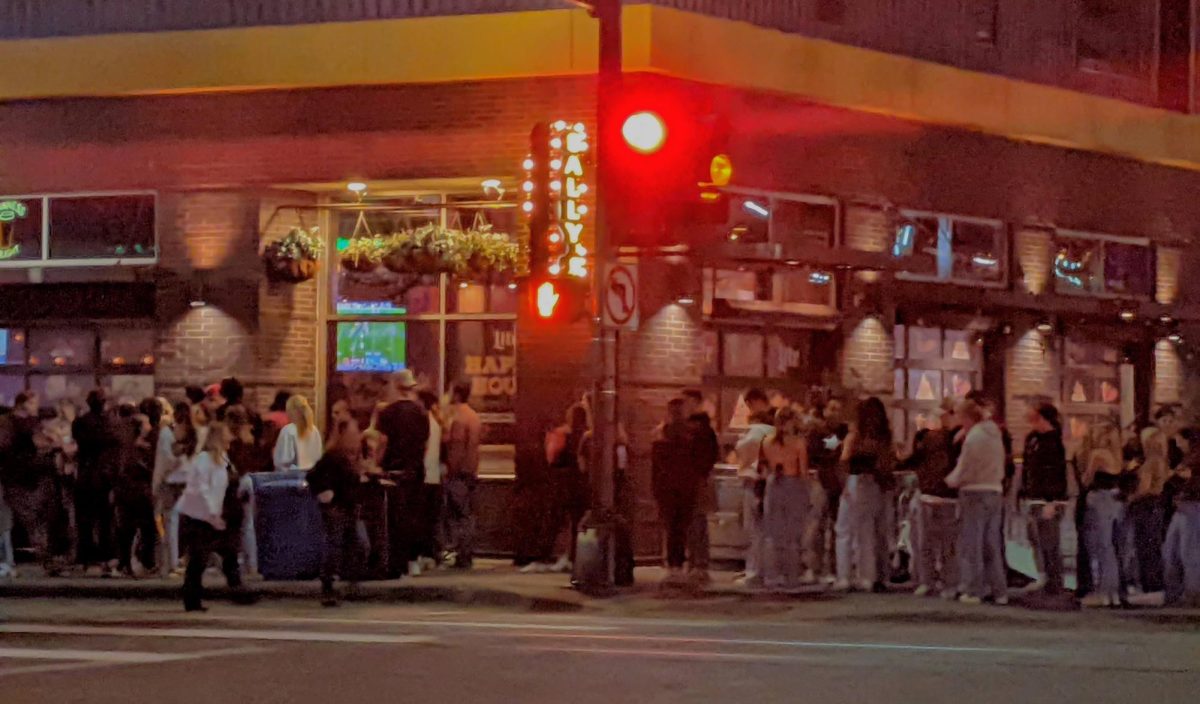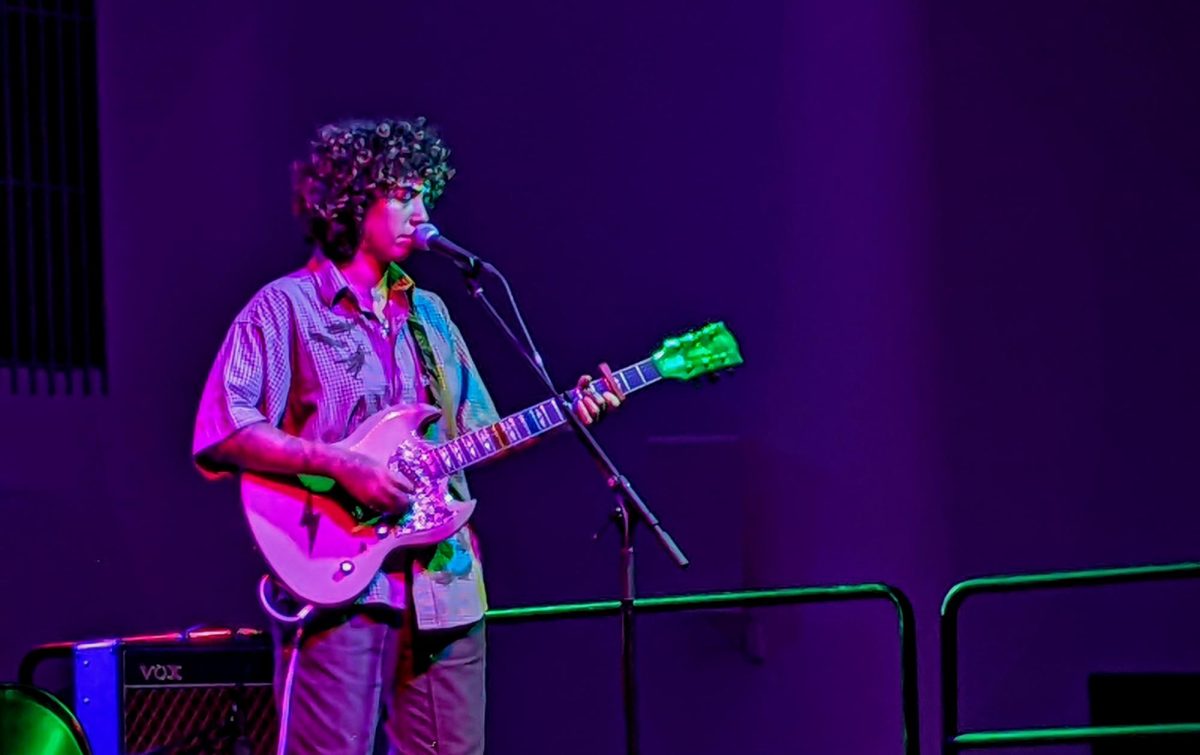Sheherazade, a character of Middle Eastern mythology, saved the lives of other women by telling stories to distract a malicious ruler. The title of the contemporary art exhibit by Muslim women, “Sheherazade: Risking the Passage,” invokes a sense of Sheherazade’s bravery – her ability to use narrative to enlighten audiences while helping others take refuge, risking her own life in the process. Ultimately, “Sheherazade” is about giving women a voice. Women’s stories have often been stifled in history, but the women involved in this show have a specific resonance which challenges oppressive traditions.
Everyone in this world deserves freedom of choice. Whether that choice is as complex as selecting a career or deciding not to adhere to religious rituals, that individual freedom should not be dictated by one group. Right now, protesters are speaking out against the George W. Bush administration in response to a possible war with Iraq. But this type of resistance is not the only method against oppression. Narratives expressed through images, sounds, words and installations might evoke a deeper sentiment; a personal narrative is capable of reaching out and striking with more candor, thus affecting the viewer more permanently.
The exhibition, as a whole, explores the complex intersections of what it means to be Muslim, a woman, an artist or simply human. The nine artists are Muslim or have lived in Muslim environments, and their art reflects the diversity of Islamic cultures. While all these women currently live in Canada or the United States, some have lived or spent time in Iran, Iraq, Kenya, Morocco, Lebanon or Saudi Arabia. Their aesthetic sensibilities, modes of production and issues addressed are as diverse as their identities are from each other. While there remains a common ground, they all have a distinct voice, and they remind their audiences that there are more commonalities across cultures than there are differences.
Hend Al-Mansour began thinking about organizing “Sheherazade” about two years ago. She sent a proposal to the Women’s Art Registry of Minnesota, a nonprofit arts organization that supports women artists and promotes their work. After approval by the WARM board, Mary Martin, then director of WARM and current volunteer board member, began collaborating with Al-Mansour to bring the project to fruition. With co-sponsorship from the Women’s Art Institute of the Minneapolis College of Art and Design, the show is finally ready for exhibition.
Al-Mansour is both an artist and the project director of this event. Her installation, “Autobiography #3,” resembles the cover of a book from the outside. Wearing an abaya (veil) and with bare feet, one can step into her world. Across the threshold, fabrics – some silk-screened with henna – hang from the walls, enveloping the viewer. Taken from the Quran, the messages printed on the fabric translate to, “Marry your choice of woman, two and three and four.” It’s Al-Mansour’s technique for expressing her frustrations with Islamic teachings. “I equal one-fourth of a man,” she explains. However, the graceful way she hangs the fabrics makes the installation space feel homey – she presents conflicting issues in a loving way. From Saudi Arabia, but now residing in St. Paul, Al-Mansour recalls the censorship of art in her native country. Here, her goal is to make people aware of women with no voices.
Another Minnesotan, Michelle Mehri Mousavi, tells a different story. Born in Illinois to an Iranian father and American mother, she has a unique perspective on the intersection of cultures reflected in her film “Both Sides.” Through a nonlinear narrative, a montage of juxtaposed images and sounds, she depicts one woman’s journey while revealing parallels between religion in Iran and assimilation by capitalism in American culture. “There’s so much more talk about the differences than the similarities,” she said in an interview. Both cultures have comparable forms of oppression. She uses an American flag to represent capitalism and the veil to symbolize Islam. Whether through woman’s invisibility or assimilation to a material existence, both cultures oppress the individual while simultaneously offering freedoms. At 26, Mousavi was working as an actor in the United States and experienced pressure to make her appearance conform to mainstream expectations. When she went to Iran, she put on a veil for the first time. While it was disconcerting, she also felt a sense of release. All of the image issues she faced in the United States immediately faded. She felt equalized. There was no competition with the women in Iran, but instead a sense of unity.
Like Mousavi, all of these artists are working between cultures. Sylvat Aziz paints in a simple, direct language to create vivid, unapologetic images. “Anderuun” (“inside” in Urdu) depicts a nude woman lying on hibiscus flowers whose face is covered with a veil and whose midsection is draped with a swath of fabric. The painting shows the melding of cultural influences: The style is reminiscent of Matisse and Orientalist paintings, while the images of the veil and the black and white geometric compositions are strong references to Islamic culture. “Culture and its evolution, its power on society, men and women, are of central importance to me,” Aziz said.
Lalla Essaydi’s art led her on a journey back to Morocco to confront the past. Her photographs are set in a house owned by her extended family, used for confining women of the family who have exhibited unacceptable behavior. Essaydi spent hours applying henna calligraphy to the bodies of female acquaintances. An Arabic verse praising the house’s owner for his good taste covers their nude bodies as well as the tiles on the house. Essaydi talked about the cultural implications of her work: “These photographs have led me to a greater understanding of the importance of architectural space in Islamic cultures. Traditionally, the presence of men has defined public spaces: the streets, the meeting places, the places of work. Women, on the other hand, have been confined to private spaces, the architecture of the home. In my photographs, I am constraining women within space and also confining them to their ‘proper’ place, a place bounded by walls and controlled by men. The henna painted on their bodies corresponds to the elaborate pattern of the tiles. The women then, become literal odalisques,”
By contrast, Kitty Aal’s photography documents the daily life of contemporary Arab women. They have assimilated to American culture, void of stereotypical Arab identity markers, yet their identities remain those of Arab-American women. “My photographs offer an alternative vision of what Muslim women look like and show them away from environments laden with violence and dark oppression which are often the only situations they are portrayed in magazines, newspapers and on television,” Aal said. “My own experience of growing up Muslim here in America was/is filled more with contemplation than resistance. I don’t look ‘Muslim’according to the going impression of what that looks like and that has given me freedom to avoid being imprisoned by other people’s expectations. I feel my photography reflects that in the sense that the women in the pictures seem a part of their own world, floating above the messiness of this one.”
In “Human Hearts,” Hiba Mohammad displays plaster hearts with tags which read, “I am Muslim,” “I am European,” and “I am South American.” Beneath all of the 12 hearts arranged on a grid reads, “I am Human.” Mohammad said, “My piece is about people and their humanity. And judging people by their level of humanity as opposed to what color, gender or religion they are.”
With written dialogue on sheer fabric hung before paintings of women, Doris Bittar’s work reveals differences in cultural acceptance. “In my paintings I want to reach out to the American audience, to convey a sense of conflict, to give voice to the sufferings of Arab-Americans and how they view the conflicts at home in terms of loss of civil rights and the conflicts abroad regarding our foreign policy post-Sept. 11, 2001. I also want to reach out to the people of my homeland, Lebanon. Lebanon is a country in deep need of dialogue amongst its factions,” she stated.
Sehr Jalal paints in a traditional Islamic style, but the content of her work is contemporary and autobiographical. The miniature painting style was practiced in Persian and Mughal courts during the 15th-19th centuries, but Jalal’s female protagonists subvert the traditional male-dominated narratives. “The themes relating to my work are almost always on a personal level. The work that I have done since coming to Boston three years ago explores my experience of coming and settling in a different environment. It is very interesting for me to show my work to a different audience from the one I had in Pakistan, where they felt they had an immediate affinity to the miniature tradition as it is very much a part of their cultural heritage.”
Finally, Sherazad Jamal refers to the female body in her installation, “The Body Project.” Saree, a fabric often worn by her mother, is used to create banners that hang to create a room. Words and symbols are inscribed on the banners which are of four colors: green for growth, love and healing; red for groundedness, self-knowledge and self-empowerment; turquoise for a deep spiritual love; and violet for a connection to the energy of the universe. Working on the installation with her mother, she blends ideas of what is considered “women’s work” and what is part of the intercultural public sphere. “My art comes from personal experience. I consider myself to be a survivor of many things, not unlike Sheherazade herself. So, like my namesake, I draw upon my own stories within my life’s tapestry to tell in my art.”
Thanks to artists such as those in this exhibition, Muslim women no longer have to be invisible in Western media. “Indeed, cultural stereotypes need to be ditched. But these certainly should not be replaced by politically correct images that function to reduce issues to a neutral sterility; nothing is either revealed, learned or understood this way,” said Sylvat Aziz. Certainly, the art presented in this exhibition is not painless, but beautiful, sometimes disturbing and always fraught with significance.
“Sheherazade: Risking the Passage” is on exhibit through March 15 at El Colegio Gallery (651) 645-1165, free.
Women’s Art Institute lecture with Hend Al-Mansour, 7 p.m., March 6, MCAD, (612) 874-3765
International Women’s Day Celebration with Raheel Raza, 6:30 – 9 p.m., March 8, El Colegio, (612) 728-5727
Amy Danielson welcomes comments at [email protected]


